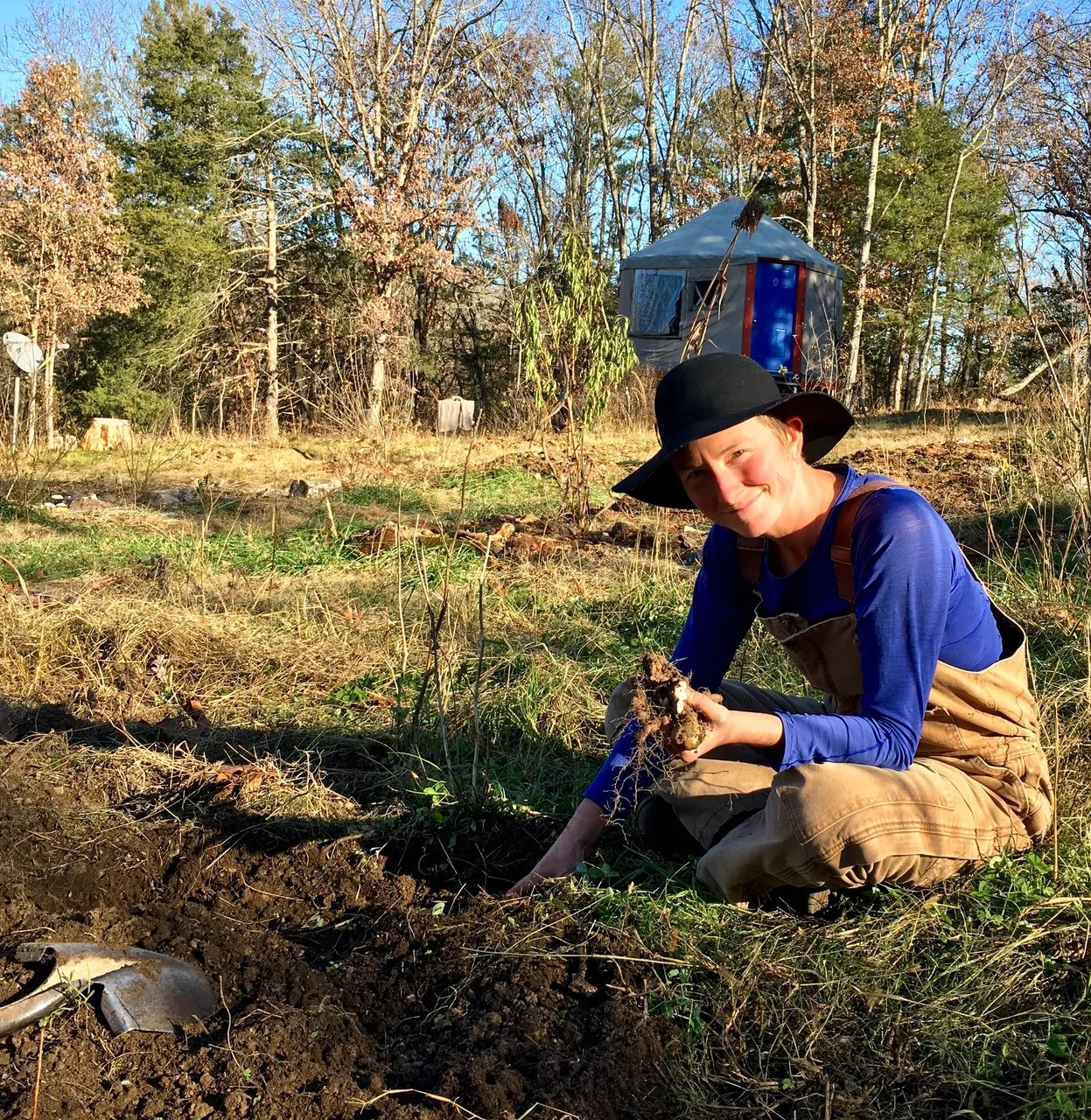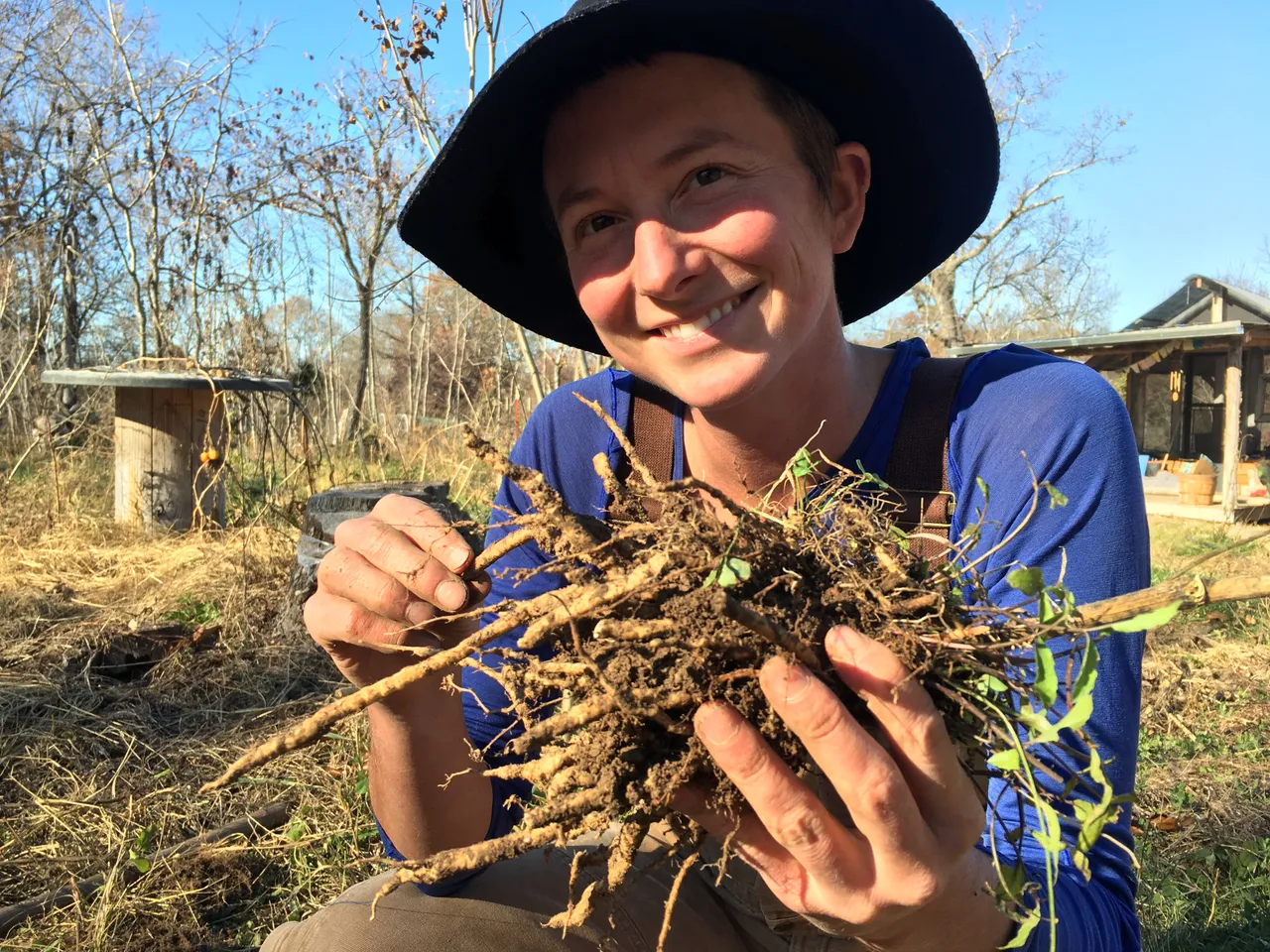Perennials.
Food production has long been a passion of ours, the scope and scale of which has evolved over the years. What began as forays into annual market gardening has morphed into more of a focus on perennial food crops. With high labor input and annual tillage (in most cases), the model of annual gardening left us wondering if there was another way to grow food.
There is a huge diversity of underutilized perennial plants that represent a great potential for sustainable food production. Apples, asparagus and rhubarb are perhaps the most well known, but indeed there are a host of perennial plants that yield unique and nutritious food. Many of these have interesting histories and their relationship with humans spans generations, yet they have simply been forgotten in our era when ease of marketability, transportation, appearance and shelf life take precedence.

We believe in a future agriculture where our needs are met harmoniously while the Earth and her creatures are cared for.
As we establish a relationship with the land we steward, we are constantly evolving and discovering what works and what doesn’t. We are discovering for ourselves what foods the land is best suited for, not imposing unreasonable demands. We take note of what species are present, which plants thrive with little attention, and the results of certain practices. We’re putting our money on perennials.
Our vision is to grow as many perennials as possible and share the joys and merits of perennial food production.
By starting small and developing nursery stock of useful and productive perennials, we are allowing time for feedback and evolution. Trees of course factor in heavily, but there’s also a large learning curve for us as we seek appropriate perennial vegetables.

Watch our DTube video as we go through the garden talking about these plants and our perennial vision!
Every year we expand our collection and propagate the established plants. Thinking in terms of years instead of months takes patience and the harvest doesn’t come quickly, but through these thoughtful and consistent actions, we align with and leverage the abundance of nature’s natural propagating tendencies. Perennials are inherently more resilient and stable than annuals. Growing with no soil disturbance and well-developed root systems, perennials are a great choice for lower input food production and long-term sustainability. As we establish perennial polycultures, we are setting up for long term resiliency, which becomes increasingly important in a time of unstable and mercurial weather patterns and seasons.
Allying with larger cycles and taking notes from nature, we see acts such as tilling and annual seeding as unnecessary in many cases. The abundance of nature is available to us if we take note of the dynamics inherent in natural ecosystems and their food-producing members. This is apparent as we divide roots, take cuttings and spread seeds. We’ve already seen with several perennials that plants can survive with less care and attention than many annuals and readily propagate themselves.
There’s a great deal of work needed in developing the systems that will feed us into the future. We are excited to be engaging in this most important of tasks. Below we’ve listed a few plants that we’ve added to our living collection over the past 2 years. We also have created a companion vlog that we’ll be sharing shortly.
These plants thrive in our Zone 6b climate and we highly recommend them. We bought the first 2 earlier this year using Steem and are excited to report back.
Chinese Mountain Yam – Dioscorea batatas

As the name suggests, the edible portion of this plant is a yam, a delicious underground tuber. This genus represents a huge potential of untapped food. Rudolf Steiner said that this would be the staple of the future; owing to its high food value and supposed ability to bring light ether into the body. Relatively unknown in North America as food, the Chinese mountain yam is more commonly cultivated as an ornamental. However, in Japan 100,000 tones are harvested annually for food! It is a long-lived tuber that is often harvested when 2 to 3 years old and which can growth 3-4 feet deep!
While the growth habit may look similar to a sweet potato with its sprawling, vining growth habit, this yam is unrelated and has a slightly more floury texture. Chinese mountain yams also produce tiny aerial tubers that can be eaten or planted, although portions of the underground tubers are a more common method of propagation. Tuber production is increased by trellising. We shall see how it does in our rocky soils, but we are excited to keep expanding our production.
Groundnut – Apios americana

The groundnut is an important yet underrepresented nitrogen fixing food crop that grows wild throughout the USA and Southern Canada. It played a vital role in the diets of many Native Americans and was indispensible for feeding early colonists who were ill equipped to survive winter in a new land. Indigenous populations managed or encouraged stands of groundnuts for increased production.
As the name implies, the edible portion is similar to a walnut growing underground, bearing edible balls on a rope like strand. The tubers boast 16 percent protein (triple that of potatoes) and can yield up to 8 pounds from a single plant! Over the past 20 years or so, selections have been bred by Louisiana State University for increased size and ease of harvest. The resulting tubers are much bigger than tubers found in the wild. Groundnuts may take a few years to get established, but can yield annual harvests for many years.
Skirret – Sium sisarum

Skirret is a once popular root crop that has since fallen out of favor. Yielding a cluster of pencil thick carrot like roots, it suffers from few pests and produces and multiplies with little to no inputs. If given good moist soil it can produce large amounts of sweet root mass.
With a flavor reminiscent of carrot and parsnip (they are all from the same botanical family) and potato, skirret can be enjoyed in a variety of ways. Baked, boiled, fried, or mashed it has filled the bellies of many over the years, but has perhaps fallen out of favor due to smaller root size and difficulty cleaning. This perennial gets its name from the Dutch for sugar root and when tasted you’ll see why. It’s a truly delicious, easy to grow and propagate plant.

With these 3 examples, we hope to encourage you to consider adding perennials to your garden plantings.
You’ll find they quickly become friends due to their easy nature & habit of propagating themselves- who said you have to work hard to grow food? Why not let the food grow itself! We believe in a perennial food future with rich soil teeming with microbes (to take a phrase from the popular book of that same title). While gardening is an enjoyable and healthy pastime any way you slice it, the perennial beds are like gifts to your future self. Each time you plant one, you’re feeding yourself and your friends and family for years to come.
Who knows, perhaps in the future we will even sell some of these plants on the @homesteaderscoop for SBD! Let us know if you have interest!
In the meantime, check out our thornless blackberries which are also self replicating, perennial, easy to grow and, of course, tasty!
This is a vision of abundance!
References –
Toensmeier, Eric. Perennial Vegetables. Chelsea Green: White River Junction, Vermont 2007.
Posted from my blog with SteemPress : http://www.ozarkmountainjewel.com/2018/11/23/a-case-for-edible-landscaping-with-perennial-plants-3-plant-profiles/